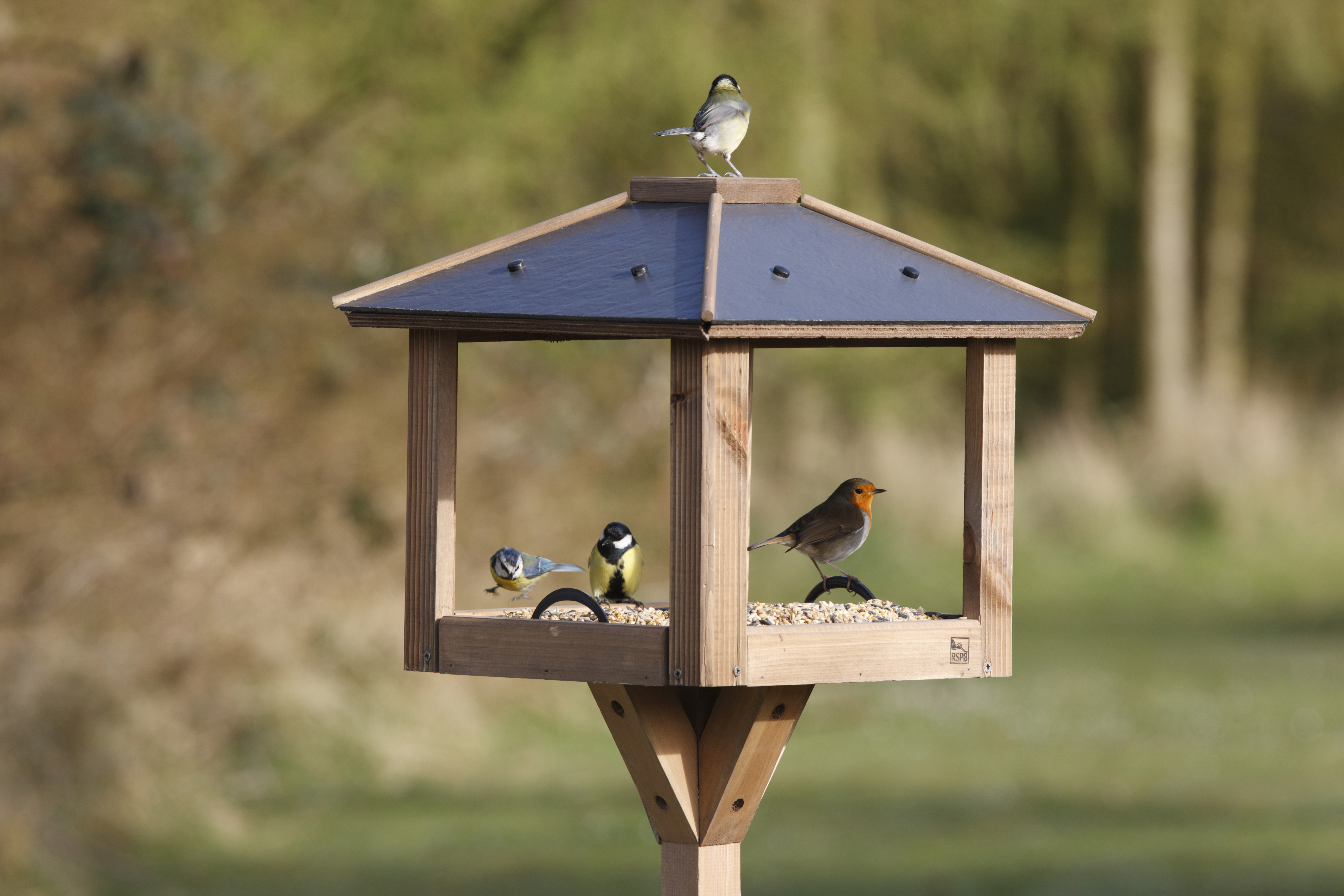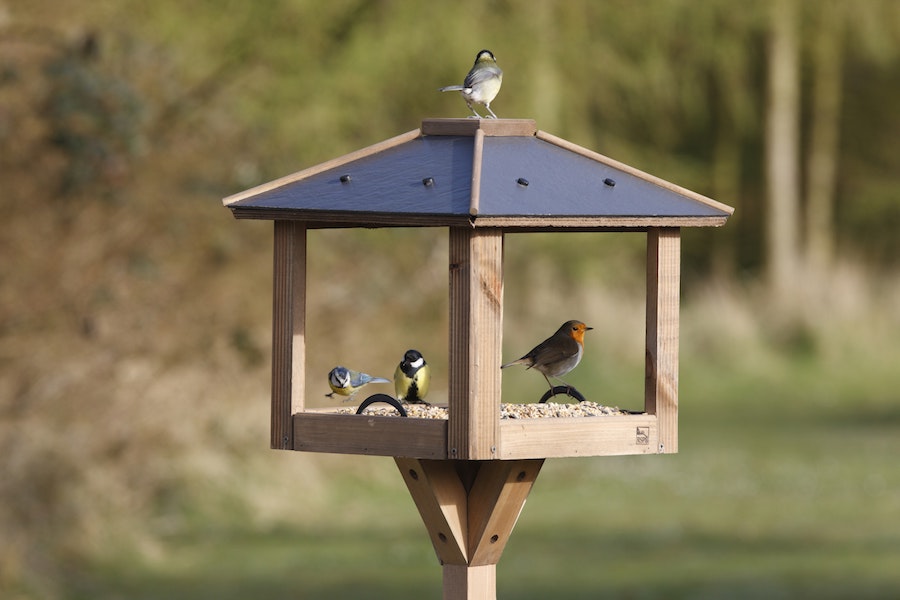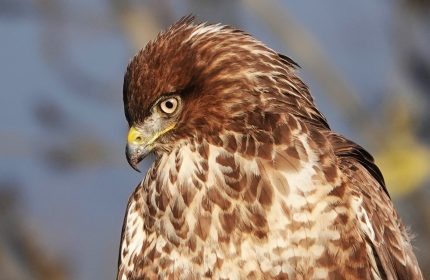How to create your own ‘bird café’ ahead of the Big Garden Birdwatch
Think one bird feeder is enough to attract a few feathered friends to your garden during the RSPB’s Big Garden Birdwatch?
Why not spread your wings and create a full-blown ‘bird café’, to encourage a wider range of birds?
Half a million people are expected to take part in the event, which this year takes place from January 27-29, spending an hour a day watching and counting the birds in their garden or local green space, before sending their results to the RSPB.

Join the Big Garden Birdwatch
Tempted to take part? The RSPB offers the following step-by-step guide to creating your own bird café…
1. What you will need

Bird feeders, bird table, choice of bird seed mixtures, such as bird cake and food bars, sunflower seeds or hearts, nyjer seeds, live foods and other insect foods, lard and beef suet, cooked rice, uncooked oats. Different birds like different foods. Try a range to see what works best in your garden.
2. Use quality feeders

Invest in quality feeders and roofed bird tables, which will keep food dry and stop it going off. As a good start, include: a hanging plastic feeder containing sunflower hearts for (mainly) finches, tits and sparrows; a hanging mesh feeder with peanuts for (mainly) tits; a hanging mesh feeder with fat balls for (mainly) tits and sparrows; a nyjer seed feeder for goldfinches; a ground feeder or bird table with an oat/fruit/fatty nibbles mix for robins and blackbirds.
3. Pick a good spot

Place feeders high up to avoid predators
Place the feeders high enough so they are out of reach of ground predators like cats. They should be a couple of metres away from thick cover like bushes, so that small birds can beat a hasty retreat from aerial predators, such as sparrowhawks. If you don’t get any visitors, try a different location.
Move the feeders to different locations over the course of a year, so that you don’t get a build-up of debris underneath.
4. Think about health & hygiene
Make sure the foods are kept in rodent-proof storage bins. Also, unhygienic feeding stations can quickly transmit diseases between birds, so clean your feeders and bird tables regularly, washing them down with a mild disinfectant and hot water, rinsing them fully and drying them out before filling them back up with food. And alear up under your feeders – you don’t want a problem with rodents at night.
5. Deal with unwanted visitors

Rats, mice, squirrels, pigeons, and members of the crow family can wolf down what was meant for smaller birds. The best solutions are feeders with ‘guardian’ cages around the outside – small birds can slip through the gaps, but larger creatures are excluded. Add weight-activated feeders, which close off the feeding ports when something heavy like a pigeon or squirrel sits on them. Be prepared to buy the best if you are to outwit your ‘opponents’, and you may need to be quite ingenious.
And if you can’t stretch to a café…

If setting up a whole bird café isn’t an option, you can still participate with single feeders. Provide them with a variety of food, but fatty food will be especially helpful in winter. Fat balls or homemade bird cakes, which only take a few minutes to make and can be a great children’s activity, are perfect for your feathered friends.
These can be made cheaply with kitchen scraps and lard. If you prefer, seeds, fruits or dried mealworms are also among birds’ favourite snacks.

Give birds a bath.
Birds need fresh water for drinking and bathing, so even if you just put a bowl of water out, that will help.
Provide shelter from the harsh weather by carefully planting dense hedges, such as privet or hawthorn, or allowing ivy or holly to grow. This will give birds a great place to roost in and shelter from the elements. Nestboxes can also make good roosting sites.
Big Garden Birdwatch takes place from January 27-29. For details, visit: rspb.org.uk/birdwatch
The Press Association
Latest posts by The Press Association (see all)
- 5 surprising things you can clean in the washing machine - January 9, 2025
- Prince William posted a heartfelt birthday message to ‘most incredible wife and mother’ - January 9, 2025
- Birthday wishes for Catherine from royal family as the Princess of Wales turns 43 - January 9, 2025
- Maple Cinnamon Granola - January 8, 2025
- 8 things your feet can tell you about your health - January 8, 2025





















